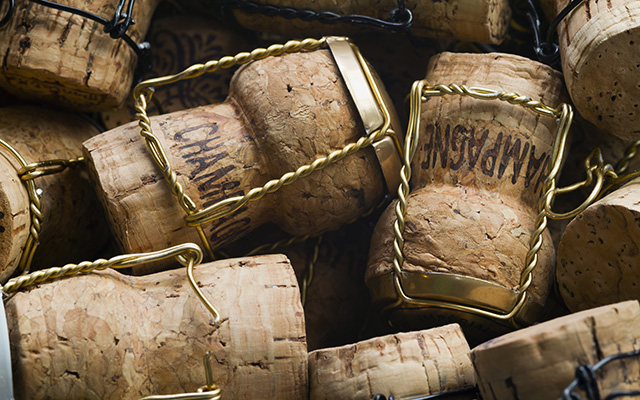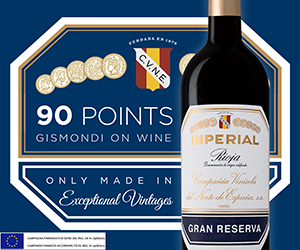Style is one of those words you aren't supposed to use when you write about wine because it means different things to different people.
But like it or not, champagne has style and if you taste enough, or simply pay attention to what comes your way over the years, you, too, will come to recognize that indeed the Pol Roger is different from the Veuve Clicquot, and both differ from the Roederer Brut.
The subtle nuances that contrast the light and the ethereal against the heavier, richer offerings, or the toasted/biscuity style versus the fruity, citrus offerings are the basis of every champagne producer's "house" style.
Blending is at the heart of that style, and it begins with the three major grapes used in champagne. When pinot noir dominates the blend the wine is noticeably richer. The extra body and weight that stems from the power of pinot noir also lends the sparkler the ability to age longer in the bottle, further increasing the complexity and power of the wine.
If chardonnay is the focus, the wines tend to have a leaner structure that often appears lighter and creamier in the mouth. Elegance and finesse are the hallmark of exceptional chardonnay and, with few exceptions, this style is often better appreciated when young, especially in North America.
Pinot meunier is the region's swing grape. While it's one of the most widely planted grapes in France, it's relatively unknown to the vast majority of wine drinkers. Pinot meunier accounts for more than 40 per cent of total plantings, especially in the cooler northern sites in the Vallée de la Marne and in the Aisne department. It is also widely grown in the Aube where chardonnay and pinot noir have a tough time ripening. The meunier role in the champagne blend is to bring aromatics and fruity flavors to the wine.
This month, just in time for the holiday season, we look at the broad category of champagne once widely referred to as non-vintage and now more aptly described for what it is: multi-vintage, multi-blended wines in effect containing different grapes from scores of vineyards that, more often than not, contain one or more years of older reserve wine.
It's the flexibility to add older wines and draw from a diverse range of vineyards that allows each champagne house to reproduce a consistent taste and/or house style year in and year out, not unlike a fine cognac or blended whiskey.
While most of us buy champagne on the spot as the occasion calls for, sometimes aging the wine in your own cellar is just what's needed to apply a final dose of complexity. In the case of multi-vintage champagne, aging is not normally considered for the bigger wines, such as Bollinger Grand Année or Veuve Clicquot or Krug Grand Cuvée but another year or two or three in the cellar can reap rewards.
Here's a tip. When you buy non-vintage champagne, use a felt marker to record the purchase date right on the label. That way the next time you're in the cellar looking for a bottle of non-vintage bubbly you can be sure your guests will get the oldest aged bottled every time.
What follows is a quick look at some personal favourite, multi-vintage sparklers ready to explore over the holidays.
Krug Grande Cuvée: The granddaddy of all non-vintage sparklers, Krug is the best of the category, and so it should be, given its substantial premium. "Cuvée Number One" is how the Krug family refers to its Grande Cuvée Brut and for good reason. A mix of some 130 individual sites and wide use of reserve wines make their way into this complicated, sophisticated, crazy delicious blend. There can be as many as 20 harvests in any one bottle, only adding to its mystery. The biggest, full-flavoured sparkler in the marketplace. $260
Bollinger Special Cuvée: This is the result of the delicate blending between harvest grapes and a majority of reserve wines, some in magnums for more than 15 years in Bollinger's cellars. Spice, baked apples and amazing complexity in every glass flecked with pear, brioche and nutty aromas. The blend is 60/25/15 pinot noir, chardonnay and meunier. Special Cuvée is aged twice the time required by law. $80
Louis Roederer Brut Premier: The mix is 80 per cent pinot noir with the remainder chardonnay and a wee splash of pinot meunier. Again, it has a higher proportion of reserve wines than most houses plus it spends an average of five years in the cellar before sale. Typically aristocratic, the Roederer style is a mix of pear and citrus with nuts, seashell, baked granny smith apple and white flowers. Elegant and aristocratic. $70
Taittinger Brut Reserve: Taittinger has 288 hectares of vineyards across the Champagne region, which is always handy when the vintage goes sideways. The blend is 40 per cent chardonnay with a 60 per cent mix between pinot meunier and pinot noir. It's the high percentage of chardonnay, unique among its competitors, that gives this bubble such a leg up in finesse. Toasted notes of bread with honey, baked pear and strawberry and citrus aromas draw you into the glass. $69
Champagne Le Mesnil: It's easy to like this classy little bubble that brings purity and complexity to the mix, pushing its delicate fruit into the background and allowing the minerality and brioche notes to play a prominent role in the bottle. A rare grand cru at this price that easily over delivers in the champagne category. Gougères, anyone? $55
Pol Roger Cuvée de Reserve: One of the lightest, most elegant expressions of the Champagne region. Its restrained fruity nose mixes citrus/apple-like fruit to finish in a light, creamy aftertaste. A classy, all-purpose sparkler that can be adopted by beginners and admired by connoisseurs alike. $68
Lanson Black Label: Lanson has been making champagne since 1760. The nose is fresh and floral with classic toasted brioche notes, the palate crisp and juicy with mostly stony, green apple fruit, some lemon, hazelnuts and pear, with just a hint of sweetness in the finish. The style is balanced with some finesse; the mix of grapes is 35/50/15 chardonnay, pinot noir and pinot meunier. $65

 quicksearch
quicksearch






